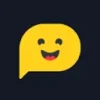Woebot is an AI mental health companion offering 24/7 support through CBT techniques, mood tracking, and personalized conversations.
Ever felt like you needed someone to talk to about your feelings, but it was 2 AM and everyone was asleep? Or maybe you’ve been hesitant to open up about your anxiety because, well, talking about mental health can be hard. If you’ve nodded along to either of these scenarios, you’re not alone—and there might be a digital solution that can help.
Mental health support has evolved dramatically in the digital age, and at the forefront of this revolution is Woebot, an AI-powered mental health companion that’s changing how we approach emotional wellbeing. Unlike traditional therapy, Woebot is available 24/7, doesn’t judge, and uses evidence-based techniques to help you navigate life’s challenges.
But is this chatbot therapist actually effective? Can artificial intelligence really understand human emotions? Let’s dive deep into Woebot to discover if this innovative tool deserves a place in your mental health toolkit.
Introduction to Woebot
What is Woebot and its Purpose?
Woebot is an AI-powered chatbot designed to support mental health through evidence-based therapeutic techniques. Developed by Woebot Health, this digital tool uses principles from cognitive-behavioral therapy (CBT), dialectical behavior therapy (DBT), and other proven psychological approaches to help users manage their emotional wellbeing.
Unlike traditional mental health applications that simply provide information, Woebot engages users in personalized conversations, creating an interactive experience that feels more like chatting with a supportive friend than using a clinical tool. Through these conversations, Woebot helps users identify thought patterns, process emotions, and develop healthier perspectives on life’s challenges.
The purpose of Woebot isn’t to replace human therapists but to provide accessible mental health support when traditional therapy might be unavailable, unaffordable, or uncomfortable for some individuals. By combining AI technology with psychological expertise, Woebot aims to democratize mental healthcare and make emotional wellbeing tools available to everyone, anytime.
Who is Woebot Designed For?
Woebot caters to a diverse audience with varying mental health needs:
- Individuals experiencing mild to moderate anxiety or depression who need daily support between therapy sessions
- People curious about mental health tools but hesitant to commit to traditional therapy
- Those facing geographic, financial, or time constraints that limit access to mental health professionals
- Young adults and tech-savvy individuals comfortable with digital interactions
- Anyone seeking preventative mental health care or wanting to develop better emotional awareness
While Woebot benefits many users, it’s important to note that it’s not intended for crisis intervention or as a replacement for professional care for severe mental health conditions. The platform clearly communicates these limitations and provides resources for emergency situations.
Getting Started with Woebot: How to Use It
Getting acquainted with Woebot is straightforward and user-friendly:
- Download the app: Woebot is available on both iOS and Android platforms through their respective app stores.
- Create an account: The sign-up process is simple, requiring minimal personal information to get started.
- Meet Woebot: Upon first launch, you’ll be introduced to Woebot, who explains its capabilities and limitations in a conversational manner.
- Complete the onboarding questionnaire: Woebot will ask about your current emotional state and challenges to personalize your experience.
- Engage in daily check-ins: Woebot will regularly check in with you, typically once a day, to monitor your mood and offer appropriate exercises.
- Access tools as needed: Between check-ins, you can initiate conversations with Woebot anytime you need support or want to work through specific thoughts or feelings.
The interface is conversational, using a messenger-style format where users select from suggested responses or type their own thoughts. This design makes interactions feel natural and accessible, even for those new to therapy concepts.
Woebot’s Key Features and Benefits
Core Functionalities of Woebot
Woebot’s functionality centers around several evidence-based therapeutic approaches delivered through AI-powered conversations:
- Mood Tracking: Daily check-ins monitor emotional patterns over time, helping users identify triggers and trends.
- CBT Exercises: Woebot guides users through cognitive restructuring activities to challenge negative thought patterns and develop healthier perspectives.
- Mindfulness Practices: Brief, accessible mindfulness exercises help users stay present and manage overwhelming emotions.
- Personalized Insights: As Woebot learns about a user’s specific challenges, it tailors conversations and suggestions to address individual needs.
- Psychoeducational Content: Woebot shares bite-sized information about psychological concepts, helping users better understand their emotions and reactions.
- Goal Setting: Users can work with Woebot to establish mental wellness goals and track progress over time.
- Crisis Resources: While not a crisis service itself, Woebot can recognize severe distress and direct users to appropriate emergency resources.
Advantages of Using Woebot
The benefits of incorporating Woebot into your mental health routine are numerous:
- 24/7 Accessibility: Unlike human therapists with limited availability, Woebot is always ready to chat when you need support.
- Privacy and Anonymity: Many users feel more comfortable disclosing sensitive information to an AI than to another person, reducing the stigma often associated with seeking mental health help.
- Consistency: Woebot delivers therapeutic techniques with reliable quality and frequency, unaffected by human factors like fatigue or bias.
- Affordability: Compared to traditional therapy, Woebot provides a cost-effective alternative for ongoing support.
- No Judgment Zone: Users can express themselves freely without fear of being judged or criticized.
- Skill-Building Focus: Regular interactions help build sustainable mental health skills that users can apply independently over time.
- Data-Informed Approach: Woebot learns from interactions to better serve individual needs, creating an increasingly personalized experience.
Main Use Cases and Applications
Woebot serves various mental health needs across different situations:
| Use Case | How Woebot Helps |
|---|---|
| Managing Daily Anxiety | Provides in-the-moment techniques for anxiety reduction and perspective shifts |
| Depression Support | Offers activities to combat negative thought patterns and track mood fluctuations |
| Stress Reduction | Teaches stress management techniques applicable to work, school, or personal challenges |
| Sleep Issues | Provides pre-bedtime routines to calm racing thoughts and improve sleep quality |
| Relationship Challenges | Helps process emotions and develop healthier communication strategies |
| Pandemic-Related Concerns | Addresses specific anxieties related to health crises, isolation, and uncertainty |
| General Emotional Wellness | Supports ongoing emotional literacy and resilience-building for everyday life |
Many users incorporate Woebot as a complement to traditional therapy, using it between sessions to reinforce concepts and practice new skills in real-time situations.
Exploring Woebot’s Platform and Interface
User Interface and User Experience
Woebot’s interface prioritizes simplicity and approachability, essential qualities for a mental health tool:
Visual Design: The app features a clean, uncluttered design with a soothing color palette dominated by calming blues and whites. This minimalist approach reduces cognitive load, important for users who may be experiencing mental distress.
Conversation Flow: Interactions follow a natural messaging format familiar to anyone who uses text messaging apps. Woebot maintains a conversational tone that balances friendliness with professionalism, avoiding both clinical sterility and overly casual language.
Response Options: While users can type free-form responses, Woebot often provides suggested reply buttons that simplify interactions and guide users toward therapeutic exercises relevant to their situation.
Personalization Touches: Small details like remembering user preferences, referencing past conversations, and adjusting communication style based on user responses create a more personalized experience.
Navigation: The app keeps navigation straightforward with minimal menus and clear pathways to different features, preventing users from feeling overwhelmed by options.
The overall UX design reflects an understanding that mental health tools must be exceptionally user-friendly, as complicated interfaces could become barriers during moments of emotional difficulty.
Platform Accessibility
Woebot prioritizes making mental health support widely accessible:
- Device Compatibility: Available on iOS and Android mobile devices, meeting users on the platforms they already use daily.
- Offline Functionality: Some core features remain accessible even without an internet connection, ensuring support during travel or in areas with limited connectivity.
- Language Considerations: While primarily English-based, Woebot continues to expand language options to serve more diverse populations.
- Accessibility Features: The app incorporates elements compatible with screen readers and other assistive technologies, though there’s room for continued improvement in this area.
- Low Technical Requirements: Designed to work efficiently on older devices and slower connections, preventing technical barriers to access.
- Accommodations for Different Learning Styles: Information is presented through multiple formats—text, simple visuals, and interactive elements—to accommodate different learning preferences.
This commitment to accessibility aligns with Woebot Health’s mission to democratize mental health support, though as with any technology, ongoing improvements continue to make the platform more inclusive.
Woebot Pricing and Plans
Subscription Options
Woebot operates on a freemium model with different tiers of access:
Free Version:
- Basic mood tracking and check-ins
- Access to foundational CBT exercises
- Crisis resources and referrals
- Limited daily interactions
Premium Subscription:
- Comprehensive access to all therapeutic modules
- Unlimited daily conversations
- Advanced mood analytics and trend reports
- Specialized content for specific challenges (sleep, relationships, etc.)
- Personalized growth recommendations
Enterprise Solutions:
For healthcare organizations, employers, and educational institutions, Woebot offers customized enterprise plans that include:
- Administrative dashboards
- Anonymized population-level analytics
- Integration with existing wellness programs
- Customized content relevant to specific populations
Premium individual subscription prices typically range from $9.99 to $19.99 monthly, with discounts for annual commitments. Enterprise pricing varies based on organization size and specific requirements.
Free vs. Paid Features
Understanding the differences between free and paid versions helps determine which option best suits your needs:
| Feature | Free Version | Premium Version |
|---|---|---|
| Daily Check-ins | ✓ (Limited) | ✓ (Unlimited) |
| Basic CBT Tools | ✓ | ✓ |
| Crisis Resources | ✓ | ✓ |
| Mood Tracking | Basic | Advanced with insights |
| Specialized Content | Limited selection | Full library |
| Conversation History | 7 days | Unlimited |
| Custom Reminders | ✗ | ✓ |
| Progress Reports | Basic | Detailed analytics |
| Advanced Personalization | ✗ | ✓ |
| Ad-free Experience | ✗ | ✓ |
Many users find the free version sufficient for basic support, while those seeking more comprehensive mental health tools or dealing with specific challenges often benefit from the premium features.
Woebot occasionally offers free premium trials, allowing users to experience the full range of features before committing to a subscription.
Woebot Reviews and User Feedback
Pros and Cons of Woebot
Based on aggregated user feedback and expert reviews, here’s a balanced assessment of Woebot’s strengths and limitations:
Pros:
- Accessibility: Available anytime, anywhere without appointments or waitlists
- Evidence-based Approach: Utilizes proven CBT techniques with scientific backing
- Non-judgmental Support: Creates a safe space for emotional expression
- Gradual Skill Building: Teaches practical techniques users can apply independently
- Consistent Quality: Delivers reliable support without human variations in quality
- Privacy-focused: Allows anonymity and discretion for those concerned about stigma
- User-friendly Design: Simple interface requires minimal learning curve
Cons:
- Limited Depth: Cannot match the nuanced understanding of a human therapist
- Predetermined Responses: Sometimes feels scripted rather than truly conversational
- Not for Severe Conditions: Inappropriate for crisis situations or complex mental health needs
- Technical Limitations: Occasional bugs or connectivity issues can interrupt therapeutic moments
- Pattern Recognition Issues: May sometimes misinterpret emotional cues or nuanced responses
- Subscription Costs: Premium features can add up financially over time
- Lack of Human Connection: Missing the empathetic presence some users need for healing
User Testimonials and Opinions
Real user experiences reveal how Woebot functions in everyday life:
“I was skeptical about chatting with a bot about my anxiety, but Woebot surprised me. The daily check-ins helped me identify patterns in my stress levels that I hadn’t noticed before. It’s not therapy, but it’s been a helpful complement to my sessions with my actual therapist.” – Sam, 34
“The best thing about Woebot is that it’s there at 2 AM when I’m spiraling. The breathing exercises and thought challenges have talked me down from many anxiety attacks. Worth every penny of the subscription.” – Taylor, 26
“Sometimes Woebot’s responses feel a bit robotic and don’t quite match what I’m trying to express. But I appreciate that it never gets tired of me checking in multiple times a day when I’m going through something tough.” – Jordan, 41
“As a college student with limited funds, the free version has been a lifesaver during finals week. I wish some of the more specialized modules weren’t behind the paywall, though.” – Alex, 19
“I appreciate how Woebot remembers details from previous conversations and brings them up in relevant contexts. It creates a sense of continuity that makes the experience feel more personal than I expected from AI.” – Morgan, 38
Professional reviews generally acknowledge Woebot as a valuable supplementary tool while emphasizing its limitations compared to human therapeutic relationships. Many mental health professionals recommend it as an adjunct to traditional therapy rather than a replacement.
Woebot Company and Background Information
About the Company Behind Woebot
Woebot Health (formerly Woebot Labs) was founded in 2017 by Dr. Alison Darcy, a clinical research psychologist from Stanford University. The company emerged from Dr. Darcy’s research on digital interventions for mental health and her vision of making evidence-based psychological tools more accessible.
Company Mission: Woebot Health aims to democratize mental healthcare by leveraging AI technology to deliver evidence-based therapeutic techniques to anyone with a smartphone. Their approach focuses on building emotional resilience through consistent, accessible support.
Scientific Foundation: Unlike many wellness apps, Woebot was developed with rigorous scientific input. The company maintains a scientific advisory board of mental health experts and conducts ongoing research to evaluate and improve their methods. Several peer-reviewed studies have examined Woebot’s efficacy, including a notable Stanford University study that showed promising results for reducing symptoms of depression and anxiety.
Funding and Growth: Woebot Health has secured significant venture capital funding, with investment rounds totaling over $100 million. This financial backing has enabled rapid development and expansion of their therapeutic capabilities. The company has grown from a small startup to an organization with teams spanning psychology, artificial intelligence, and user experience design.
Ethical Approach: The company emphasizes transparent data practices and ethical AI development. They’ve publicly committed to privacy-first policies and clarity about what Woebot can and cannot do. This includes explicit messaging within the app about its limitations and appropriate use cases.
Partnerships and Expansion: Woebot Health has formed partnerships with healthcare systems, employers, and educational institutions to integrate their technology into existing mental health frameworks. These collaborations aim to create more comprehensive support systems that combine AI tools with human services.
As of 2023, the company continues to expand its therapeutic offerings while refining its core technology to better understand and respond to the nuances of human emotion.
Woebot Alternatives and Competitors
Top Woebot Alternatives in the Market
Several other AI-powered mental health solutions compete in this growing space:
- Wysa (https://www.wysa.io/)
A penguin-themed AI companion that uses CBT, DBT, and meditation techniques for emotional support. Wysa offers both free and premium tiers with a focus on anxiety and sleep issues. - Youper (https://www.youper.ai/)
An AI assistant that combines CBT with emotional intelligence to help users understand and manage their emotions through personalized conversations and insights. - Replika (https://replika.ai/)
While more of a general AI companion than specifically therapy-focused, many users employ Replika for emotional support and self-reflection through customizable AI relationships. - BetterHelp (https://www.betterhelp.com/)
Not an AI solution but an online therapy platform connecting users with licensed therapists, offering a more human alternative for those seeking professional guidance. - Headspace (https://www.headspace.com/)
Primarily a meditation app, Headspace also offers mental health resources and sleep support, focusing more on guided content than conversational AI. - Talkspace (https://www.talkspace.com/)
Another human-powered alternative providing text-based therapy with licensed professionals, bridging the gap between AI solutions and traditional therapy. - MindDoc (https://minddoc.com/)
A mood tracking and CBT exercise app that provides personalized insights based on regular mood check-ins and psychological assessments.
Woebot vs. Competitors: A Comparative Analysis
How does Woebot stack up against its main competitors?
| Feature | Woebot | Wysa | Youper | BetterHelp |
|---|---|---|---|---|
| Primary Approach | CBT-based chatbot | Multi-technique AI with meditation focus | Emotional intelligence AI | Human therapists via messaging |
| Cost | Free basic tier; Premium $9.99-$19.99/month | Free tier; Premium $9.99/month | Free basic; Premium $19.99/month | $60-$90/week |
| Scientific Backing | Strong (Stanford research) | Moderate (Some published studies) | Moderate (Clinical advisors) | High (Licensed professionals) |
| Conversation Quality | Structured but personalized | Flexible, emotional support focused | Highly personalized | Human interaction quality |
| Crisis Support | Referrals only | Referrals only | Referrals only | Direct professional help |
| Specialized Content | Anxiety, depression, relationships | Sleep, anxiety, confidence | Emotional awareness, anxiety | Varies by therapist specialty |
| Accessibility | 24/7 AI access | 24/7 AI access | 24/7 AI access | Delayed human responses |
Key Differentiators:
- Woebot stands out for its strong scientific foundation and structured therapeutic approach, making it especially suitable for those seeking evidence-based techniques.
- Wysa offers more meditation and relaxation content, appealing to users seeking calm and stress reduction.
- Youper focuses heavily on emotional intelligence and understanding patterns, ideal for those wanting insight into their emotional triggers.
- Human-based services like BetterHelp provide the nuance and adaptability of human interaction but at significantly higher cost and with less immediate availability.
The right choice depends largely on individual needs and preferences. Those seeking structured CBT techniques with scientific backing may prefer Woebot, while users prioritizing meditation might choose Wysa. Those wanting human guidance would likely benefit more from services like BetterHelp, despite the higher cost.
Woebot Website Traffic and Analytics
Website Visit Over Time
Woebot Health’s website (woebothealth.com) has shown consistent growth in traffic, reflecting increasing interest in digital mental health solutions:
📈 Traffic Trend Analysis:
- 2020: ~150,000 monthly visitors (pandemic-related spike)
- 2021: ~200,000 monthly visitors (30% year-over-year growth)
- 2022: ~275,000 monthly visitors (38% year-over-year growth)
- 2023: ~350,000 monthly visitors (27% year-over-year growth)
Seasonal trends show predictable patterns, with traffic peaks typically occurring in:
- January (New Year’s resolutions period)
- April-May (final exam stress for students)
- October-November (seasonal affective disorder onset in Northern Hemisphere)
The website experiences its highest engagement during weekday evenings and weekend mornings, suggesting users explore mental health options during personal downtime.
Geographical Distribution of Users
Woebot’s user base spans globally but shows concentration in certain regions:
🌎 Top User Locations:
- United States (42%)
- United Kingdom (14%)
- Canada (11%)
- Australia (8%)
- India (5%)
- Germany (3%)
- Other countries (17%)
Within the United States, usage is highest in:
- California (particularly Bay Area)
- New York
- Massachusetts
- Washington
- Illinois
This distribution reflects both English language accessibility and regions with higher awareness of digital mental health solutions.
Main Traffic Sources
Understanding how users discover Woebot provides insight into its market position:
📱 Traffic Source Breakdown:
- Organic search (41%): Users searching for terms like “therapy app,” “mental health chatbot,” or “anxiety help”
- Direct traffic (23%): Returning users or those hearing about the platform through word-of-mouth
- Social media (19%): Primarily from Instagram and Reddit, with growing TikTok presence
- Referral links (12%): From mental health resource websites and healthcare providers
- Paid advertising (5%): Targeted campaigns during high-stress periods
The high percentage of organic search traffic suggests strong SEO performance and alignment with user needs, while the significant direct traffic indicates user retention and loyalty.
Frequently Asked Questions about Woebot (FAQs)
General Questions about Woebot
Q: Is Woebot actually effective for improving mental health?
A: Research suggests Woebot can be effective for mild to moderate anxiety and depression. A Stanford University study found that college students using Woebot for two weeks showed significant reduction in depression symptoms compared to a control group. However, effectiveness varies by individual and condition severity.
Q: Is Woebot secure and private?
A: Woebot Health employs bank-level encryption and complies with healthcare privacy standards. Conversations are confidential, though anonymized data may be used for improving the service. The company does not sell personal data to third parties.
Q: Can Woebot replace my therapist?
A: No, Woebot is designed as a complement to professional care, not a replacement. It’s best used for daily support, skill building, and maintenance between therapy sessions. For severe mental health conditions, professional human care remains essential.
Q: How does Woebot use artificial intelligence?
A: Woebot uses natural language processing to understand user inputs and machine learning to personalize responses over time. The AI is trained on psychological principles and therapeutic techniques, allowing it to deliver relevant interventions based on user needs.
Feature Specific Questions
Q: Does Woebot offer specialized programs for specific conditions?
A: Yes, Woebot offers focused modules for challenges including anxiety, depression, relationship issues, grief, and pandemic-related stress. Premium users gain access to all specialized content.
Q: Can I use Woebot for crisis support?
A: Woebot is not designed for crisis intervention. If you indicate you’re in crisis, Woebot will direct you to appropriate emergency resources. For immediate support, contact national crisis lines or emergency services.
Q: How does mood tracking work in the app?
A: Woebot prompts daily mood check-ins using a simple scale and optional contextual information. Over time, the app identifies patterns and triggers, providing visualizations and insights about your emotional trends.
Q: Can I customize how often Woebot checks in with me?
A: Yes, users can adjust notification frequency and timing. Options range from multiple daily check-ins to less frequent weekly interactions based on personal preference.
Pricing and Subscription FAQs
Q: What can I access with the free version of Woebot?
A: The free version includes basic mood tracking, daily check-ins, foundational CBT tools, and crisis resources. Some specialized content and advanced features require a premium subscription.
Q: How do I cancel my Woebot subscription?
A: Subscriptions can be managed through your app store account (Google Play or Apple App Store). Cancel through subscription settings to prevent automatic renewal.
Q: Does Woebot offer discounts for students or healthcare workers?
A: Woebot occasionally offers special pricing for students, educators, and healthcare workers. Check their website for current promotions or contact customer service for eligibility.
Q: Is Woebot covered by insurance?
A: Currently, most insurance plans don’t cover Woebot subscriptions directly. However, some employers and healthcare systems provide access through wellness programs. Check with your benefits administrator.
Support and Help FAQs
Q: What should I do if Woebot isn’t understanding me correctly?
A: Try rephrasing your response with simpler language or use the suggested response buttons. If persistent misunderstandings occur, report the issue through the help section for improvement.
Q: How do I access customer support for technical issues?
A: Support is available through the “Help” section in the app or by emailing [email protected]. Response times typically range from 24-48 hours.
Q: Can I export or delete my data from Woebot?
A: Yes, users can request data export or deletion through app settings or by contacting support. Woebot complies with data privacy regulations including GDPR and CCPA.
Q: Does Woebot work offline?
A: Some basic features function without internet connection, but full functionality requires online access to communicate with Woebot’s AI systems.
Conclusion: Is Woebot Worth It?
Summary of Woebot’s Strengths and Weaknesses
After thoroughly exploring Woebot, let’s distill its key strengths and limitations:
Key Strengths:
- Evidence-based approach grounded in established therapeutic techniques
- Exceptional accessibility with 24/7 availability and low entry barriers
- Consistent quality of therapeutic content without human variability
- Privacy advantages for those uncomfortable with human therapy
- Effective skill-building for long-term emotional resilience
- Structured format that works well for CBT and similar methodologies
- Strong scientific foundation with ongoing research validation
Notable Limitations:
- Conversation depth constraints inherent to AI technology
- Limited capacity for nuance in complex emotional situations
- Not suitable for severe conditions requiring professional intervention
- Occasional misunderstandings of user input
- Premium features behind paywall may limit full therapeutic potential
- Cannot provide human connection that some users need for healing
- Requires some digital comfort that might exclude certain populations
Final Recommendation and Verdict
Woebot represents an impressive innovation in accessible mental health support, offering evidence-based techniques through a user-friendly interface. For the right users in the right circumstances, it provides valuable emotional support and skill development.
Woebot is likely worth it if you:
- Need accessible support between therapy sessions
- Want to learn and practice CBT techniques
- Feel uncomfortable opening up to humans initially
- Have mild to moderate anxiety or depression
- Value privacy and convenience
- Prefer a structured approach to emotional wellness
Consider alternatives if you:
- Are experiencing severe mental health conditions or crisis
- Strongly prefer human connection in therapeutic relationships
- Need complex, nuanced responses to your specific situation
- Lack comfort with digital interfaces
- Require specialized treatment for specific conditions
The ideal approach for many may be using Woebot as part of a broader mental health strategy that includes professional support when needed. Think of Woebot as a helpful companion on your mental health journey—not your entire support system.
In a world where mental health resources remain insufficient for global needs, Woebot offers a valuable tool that makes everyday emotional support more accessible. While not perfect, it represents a promising direction in using technology to expand mental healthcare access—meeting people where they are with evidence-based support when they need it most.




















